Creating a Crate Schedule for Your Puppy
Bringing a new puppy into your home is an exciting adventure. One of the first things you’ll want to do is create a crate training schedule. This will help your puppy learn the house rules and become a well-behaved adult dog. In this article, we’ll walk you through why crate training is important, how to choose the right crate, and provide a sample schedule to get you started.
Why Crate Training is Important
Crate training is one of the best ways to make sure that puppies don’t spend their time chewing on everything in sight and peeing all over the place. A crate plays into your dog’s natural instinct to seek out a comfortable, quiet, safe place when they’re feeling overwhelmed and can be introduced at any age, although the younger you start, the better.
Choosing the Right Crate

Picking the perfect crate for your puppy is a big deal. You want to make sure it’s comfy and safe for your furry friend. Let’s break down what you need to know.
Size Matters
First things first, size is super important. Your puppy should be able to stand up, turn around, and stretch out without hitting the sides or top. If the crate is too small, it can be uncomfortable and stressful for your pup. On the flip side, a crate that’s too big might not feel cozy and secure. So, measure your puppy and pick the right size.
Material Choices
Crates come in different materials like metal, plastic, wood, and fabric. Each has its pros and cons:
- Metal crates: Durable and foldable, but can be an eyesore.
- Plastic crates: Great for travel and provide a den-like feel, but less ventilation.
- Wood crates: Stylish and can blend with home decor, but not as portable.
- Fabric crates: Lightweight and easy to move, but not as durable.
Think about where you’ll use the crate and how often you’ll move it around.
Comfort and Safety
Your puppy’s comfort and safety should be top priorities. Add a soft bed or blanket inside the crate to make it cozy. Make sure there are no sharp edges or small parts that your puppy could chew on and swallow. Also, place the crate in a quiet, safe spot in your home where your puppy can relax without too much noise or activity.
Remember, the crate should be a positive space for your puppy, not a place of punishment. With the right crate, your puppy will feel secure and happy.
Choosing the right crate is the first step in successful crate training. Get it right, and you’ll both be off to a great start!
Sample Crate Training Schedule

Creating a crate schedule for your puppy can make life easier for both you and your furry friend. Here’s a sample routine to get you started.
Morning Routine
Start the day by letting your puppy out of the crate for a bathroom break. Afterward, give them breakfast and some playtime. This helps them burn off energy and sets a positive tone for the day.
Afternoon Routine
In the afternoon, it’s a good idea to have a mix of crate time and supervised play. This can include a short nap in the crate, followed by some training exercises or a walk.
Evening Routine
As the day winds down, make sure your puppy gets another bathroom break and some quiet time. This can be a good opportunity for cuddles and bonding before they go back into the crate for the night.
Remember, the key to a successful crate schedule is consistency. Stick to the routine as closely as possible to help your puppy feel secure and understand what to expect each day.
Customizing Your Puppy’s Schedule
Creating a schedule for your puppy is essential, but it’s also important to adjust it to fit your lifestyle. Here’s how you can tweak it to make sure both you and your puppy are happy.
Adjusting for Work Hours
If you work long hours, you’ll need to make some adjustments. Consider hiring a dog walker or asking a neighbor to help out. This way, your puppy won’t be alone for too long. Remember, puppies have small bladders and need frequent potty breaks to avoid accidents like puppy excited pee.
Weekend Variations
Weekends can be more relaxed. You might want to spend more time playing and socializing a puppy. This is a great time to introduce them to new experiences and people. Just make sure to keep some structure so your puppy doesn’t get confused when the workweek starts again.
Special Situations
Life happens, and sometimes you’ll need to adjust your puppy’s schedule for special situations. Whether it’s a family gathering or a trip, try to keep some consistency. Bring along familiar items like their favorite toy or blanket to help them feel secure. If you’re traveling, make sure to have a dog health certificate handy.
Flexibility is key, but consistency helps your puppy feel secure and understand what to expect each day.
By customizing your puppy’s schedule, you’re setting them up for success and making life easier for yourself too. Whether it’s adjusting for work, enjoying the weekend, or handling special situations, a well-thought-out schedule makes all the difference.
Tips for Successful Crate Training
Positive Reinforcement
When your puppy does well in the crate, make sure to reward them. Positive reinforcement is key. Give them treats, praise, or even a favorite toy. This helps them associate the crate with good things. If your puppy is whining in the crate, wait until they stop before giving any rewards.
Consistency is Key
Stick to a routine. Puppies thrive on consistency. Feed them, take them out, and put them in the crate at the same times each day. This helps them know what to expect and reduces anxiety. Consistent schedules also aid in housebreaking a puppy.
Handling Setbacks
Setbacks are normal. If your puppy has an accident or seems stressed, don’t get discouraged. Stay calm and patient. Sometimes, you might need to adjust the schedule or give them more exercise. Remember, even the easiest puppies to train can have off days.
Crate training is a journey, not a race. Patience and persistence will pay off in the long run.
Dealing with Whining and Barking
If your puppy is whining in the crate or barking, it can be tough. Make sure they have had enough exercise and bathroom breaks. Sometimes, they just need a bit more time to adjust. If the problem persists, look into dog separation anxiety solutions or consult a trainer.
Incorporating Other Training
Combine crate training with other types of training. For example, you can work on leash training a puppy or basic commands while they are out of the crate. This makes the most of your training time and helps your puppy learn faster.
Health and Comfort
Ensure the crate is a comfortable and safe space. Add soft bedding and keep it clean. Also, consider how to improve dog gut health by feeding them a balanced diet. A healthy puppy is a happy puppy, and they will be more likely to enjoy their crate time.
Common Mistakes to Avoid
Crate training can be tricky, and it’s easy to make mistakes along the way. Here are some common pitfalls to watch out for:
Overusing the Crate
One of the biggest mistakes is leaving your puppy in the crate for too long. This can lead to separation anxiety and even accidents inside the crate. Puppies need time to play, exercise, and bond with you outside of their crate.
Ignoring Signs of Stress
Pay attention to your puppy’s behavior. If they seem anxious or stressed, it might be a sign that you’re moving too fast with the training. Take a step back and give them more time to adjust.
Inconsistent Scheduling
Consistency is key when it comes to crate training. Make sure you’re sticking to a regular schedule for feeding, potty breaks, and crate time. This helps your puppy understand what to expect and reduces anxiety.
Remember, patience and positive reinforcement are your best friends during crate training. Take it slow and be consistent, and your puppy will learn to love their crate in no time.
Integrating Crate Training with Other Training
Housebreaking
Crate training is a great way to help with housebreaking. When your puppy learns to see the crate as their den, they will naturally avoid soiling it. Start with short intervals: begin with shorter durations in the crate and gradually increase the time as your puppy becomes more comfortable and accustomed to the routine. This method helps them learn bladder control and reduces accidents in the house.
Basic Commands
You can use crate training to reinforce basic commands like “sit,” “stay,” and “come.” For example, you can ask your puppy to “sit” before opening the crate door. This teaches them patience and good behavior. Positive reinforcement dog training works wonders here; always reward your puppy with treats or praise when they follow commands correctly.
Socialization
Crate training can also help with socialization. When your puppy is comfortable in their crate, you can take them to new places without overwhelming them. This is especially useful if your dog is aggressive towards other dogs. The crate provides a safe space for them to retreat to if they feel stressed or anxious. Over time, this will help them become more confident and well-adjusted.
Combining crate training with other training methods creates a well-rounded, well-behaved puppy. It’s all about making the crate a positive, safe space for your furry friend.
Conclusion
Creating a crate schedule for your puppy might seem like a lot of work at first, but it’s totally worth it. With a bit of planning and patience, you’ll help your puppy learn the ropes and settle into their new home. Remember, every puppy is different, so don’t be afraid to tweak the schedule to fit your life. Stick with it, and soon enough, you’ll have a happy, well-behaved dog who knows exactly what to expect each day. Good luck, and enjoy every moment with your new furry friend!
Key Takeaways
- Crate training helps your puppy feel safe and secure.
- Choosing the right crate is essential for comfort and safety.
- A consistent schedule speeds up the training process.
- Adjust the schedule to fit your lifestyle and work hours.
- Positive reinforcement is crucial for successful crate training.
Frequently Asked Questions
What is the best age to start crate training a puppy?
The ideal age to start crate training is around 8 weeks. Puppies are more adaptable at this age and can quickly learn to see the crate as a safe space.
How long can I leave my puppy in the crate?
For young puppies, it’s best not to exceed 3-4 hours at a time. As they grow older, you can gradually increase the duration, but always ensure they have breaks for bathroom needs and playtime.
What should I put in the crate with my puppy?
Include a soft blanket or bed, a few chew toys, and maybe a shirt that smells like you. This makes the crate feel cozy and familiar.
How do I handle whining or barking in the crate?
It’s important not to give in to whining or barking. Wait for a pause before letting your puppy out. This teaches them that quiet behavior gets rewarded.
Can crate training help with housebreaking?
Yes, crate training is a great tool for housebreaking. Puppies naturally avoid soiling their sleeping area, so they learn to hold it until they’re let outside.
Is it okay to use the crate as a punishment?
No, the crate should be a positive space for your puppy. Using it as punishment can create negative associations and make training more difficult.

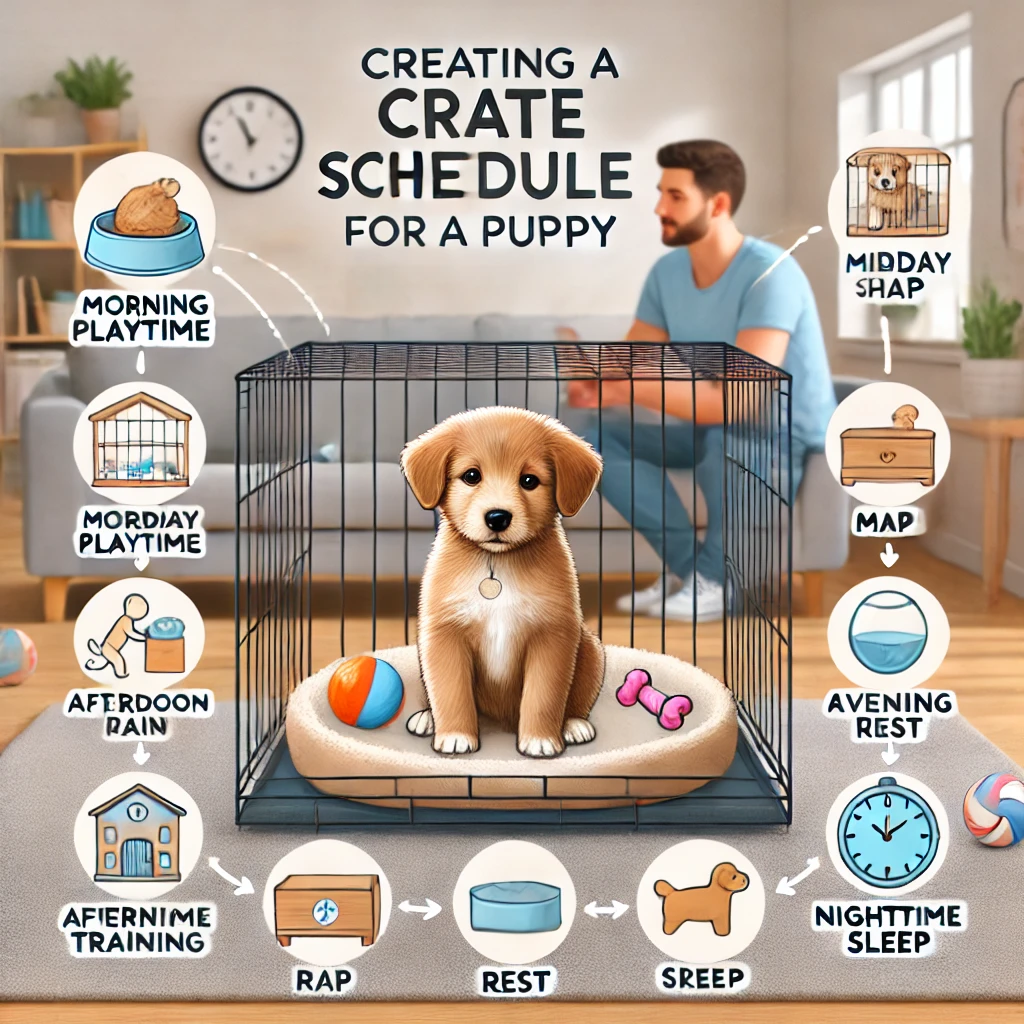
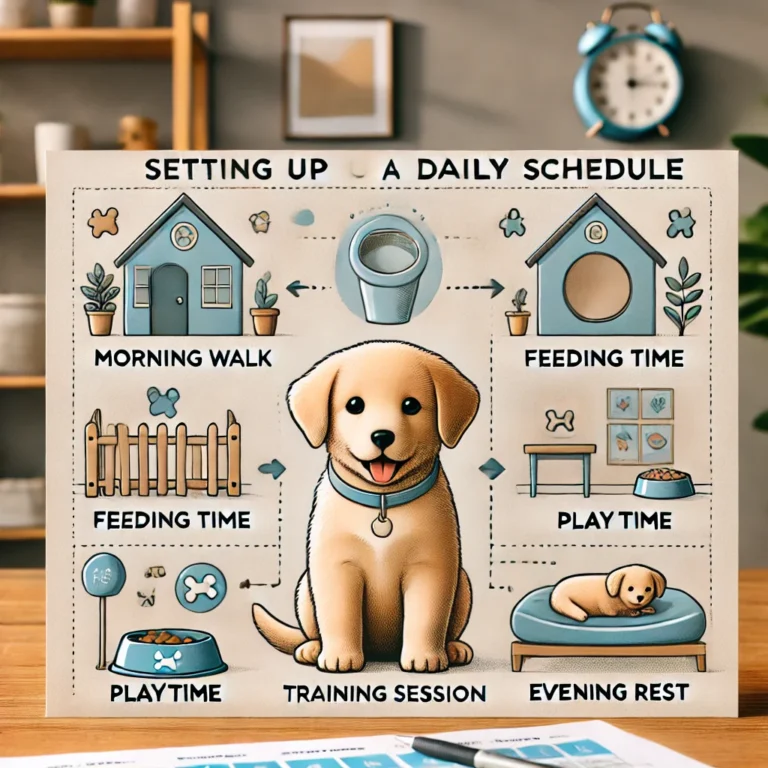
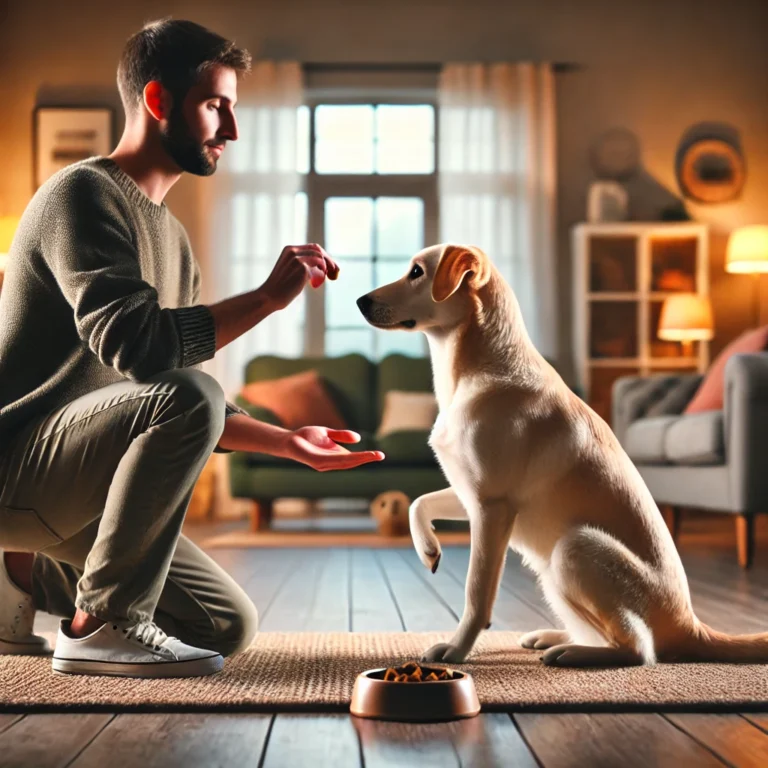
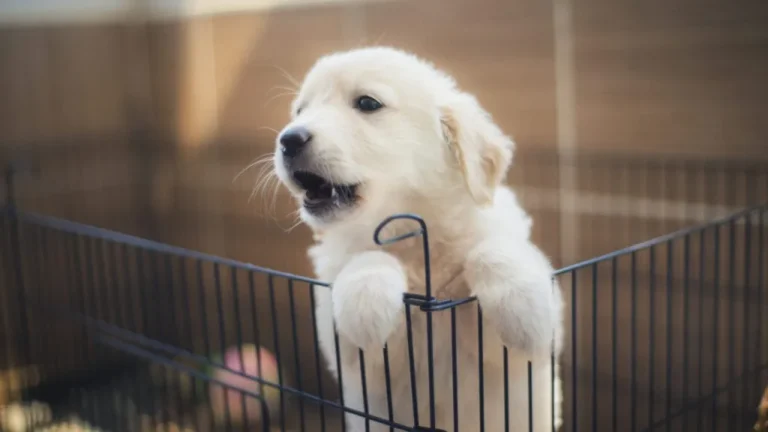

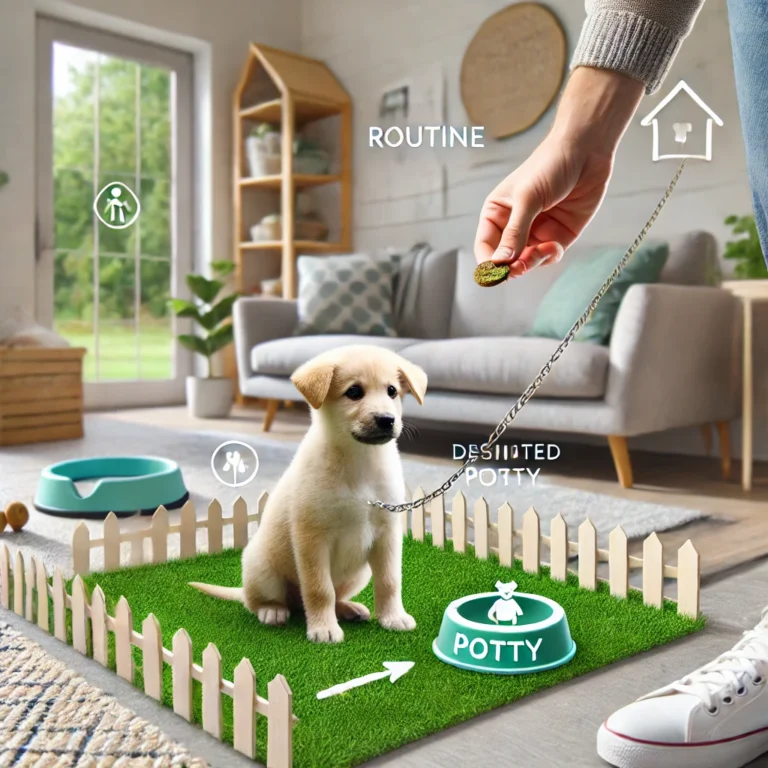
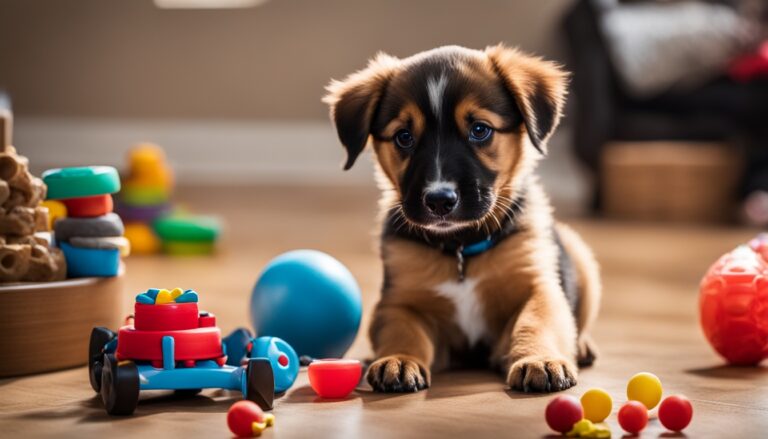
3 Comments